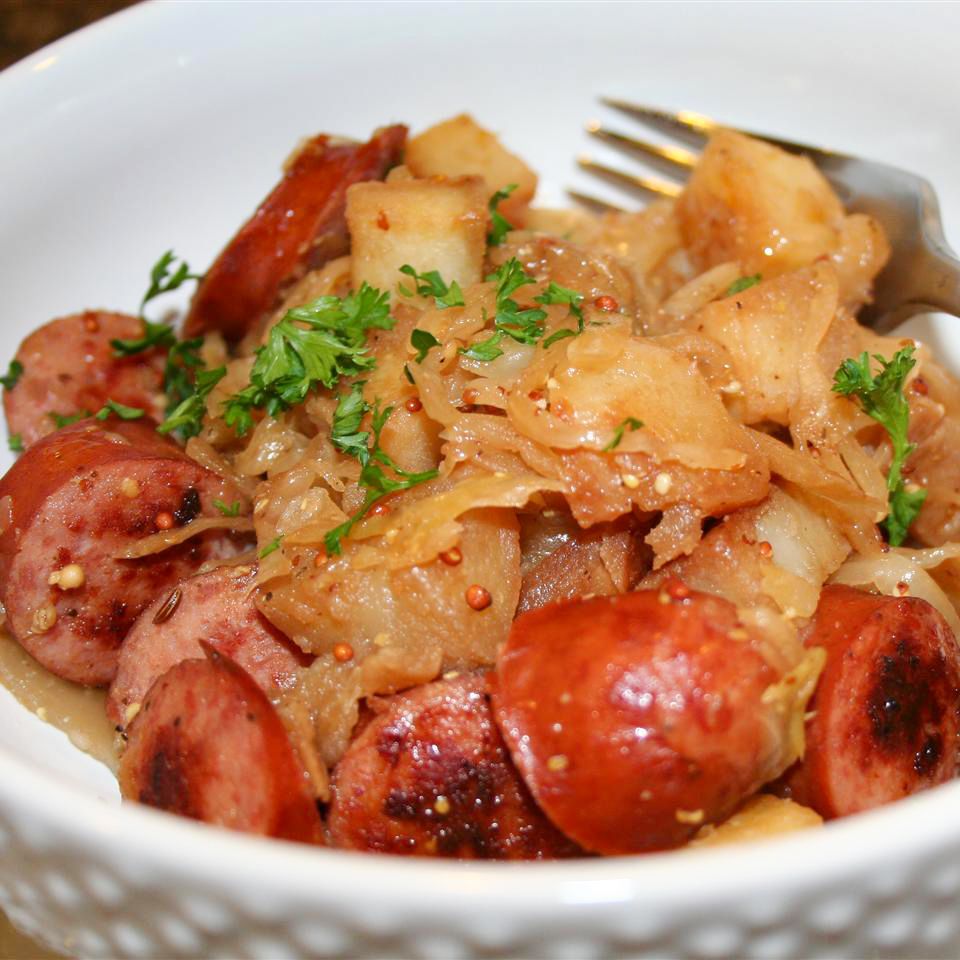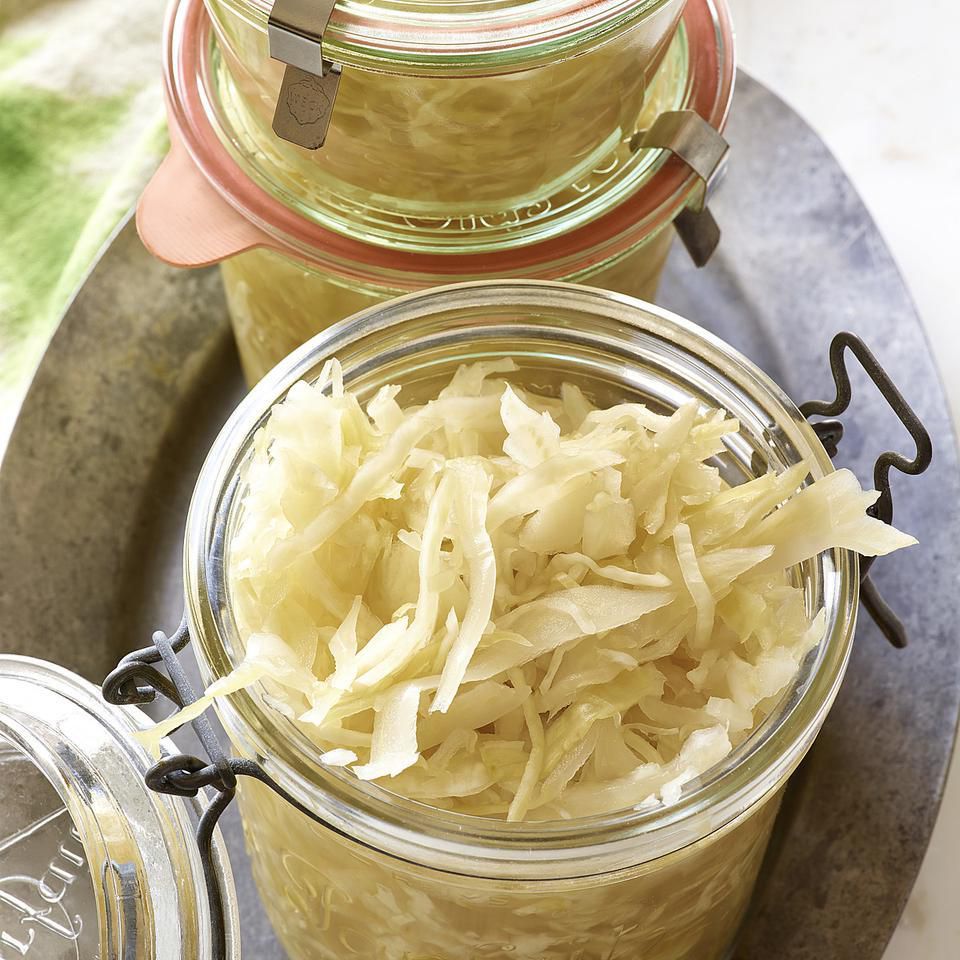How to Cook Sauerkraut on the Stove
I. Preparing the Ingredients

Sauerkraut is a delicious and versatile dish that is loved by many. It can be enjoyed on its own or as a flavorful accompaniment to various meats and dishes. In this blog post, we will guide you through the process of cooking sauerkraut on the stove, providing step-by-step instructions for a delicious and savory outcome.
To begin, gather the necessary ingredients. You will need sauerkraut, onion, and bacon. Sauerkraut is readily available in most grocery stores, typically found in the pickled foods section. The tangy and crunchy cabbage in sauerkraut will bring a delightful flavor and texture to your dish. Additionally, the onion and bacon will add savory and aromatic notes to the sauerkraut, enhancing its overall taste.
Once you have collected your ingredients, it’s important to prepare them properly. Start by rinsing the sauerkraut in a colander. This step helps to remove excess brine and reduce the saltiness of the sauerkraut, resulting in a more balanced flavor. While rinsing, you can gently press the sauerkraut to further remove excess liquid.
Next, prepare the onion and bacon by chopping them into small pieces. The onion will contribute a sweet and savory flavor, while the bacon will add a rich and smoky dimension to the sauerkraut. These aromatic ingredients will form the foundation of the dish, infusing it with a depth of flavor that is sure to delight your taste buds.
II. Sautéing the Aromatics
With the ingredients prepared, it’s time to move on to the next step: sautéing the aromatics. Heat a large skillet or pot on the stove over medium heat. The choice of cookware is important as it will ensure even cooking and prevent overcrowding, allowing the ingredients to sauté and develop their flavors effectively.
Once the skillet is heated, add the chopped bacon to the pan. The sizzle of bacon hitting the hot surface is a delightful sound, and it signifies the beginning of a delicious dish in the making. Cook the bacon until it turns crispy and releases its savory oils, filling the kitchen with a mouth-watering aroma.
Once the bacon is cooked to perfection, it’s time to introduce the chopped onions to the skillet. As the onions sauté alongside the bacon, their natural sugars caramelize, creating a sweet and savory essence that will infuse the sauerkraut with an irresistible flavor. Stir the ingredients occasionally, allowing them to cook until the onions turn translucent and develop a golden hue.
III. Adding the Sauerkraut
a. Incorporate the rinsed sauerkraut into the skillet
When incorporating the sauerkraut into the skillet, it’s important to rinse it well beforehand to remove some of the excess brine. This will help to reduce the overwhelming tanginess and saltiness that can sometimes be present in sauerkraut straight from the jar.
b. Stir well to combine with the bacon and onion
Once the sauerkraut is added to the skillet, stir it well to combine with the bacon and onion. The flavors will begin to meld together, creating a delicious aroma that will fill your kitchen.
c. Cook the sauerkraut mixture for a few minutes, stirring occasionally
Allow the sauerkraut mixture to cook for a few minutes, stirring occasionally to prevent it from sticking to the bottom of the skillet. This will also allow the flavors to continue to develop and intensify.
IV. Adding Flavors

a. Season with salt, pepper, and caraway seeds
To enhance the flavor of the sauerkraut, season it with salt, pepper, and caraway seeds. The caraway seeds add a subtle earthy and nutty flavor that complements the tanginess of the sauerkraut perfectly.
b. Optionally, add a splash of white wine or apple cider vinegar for an extra layer of flavor
For an added layer of complexity, consider adding a splash of white wine or apple cider vinegar to the sauerkraut. The acidity from the wine or vinegar will help to balance out the richness from the bacon and add a touch of brightness to the dish.
c. Stir and let the sauerkraut simmer for a few minutes
Stir the sauerkraut well to ensure that all the flavors are combined, and let it simmer for a few minutes to allow the added ingredients to fully infuse into the dish.
Once the sauerkraut mixture is ready, it can be served as a side dish alongside roasted meats, sausages, or even enjoyed on its own. The combination of tangy sauerkraut, savory bacon, and aromatic onions creates a dish that is sure to be a hit at any dinner table. This simple yet delicious recipe is a great way to incorporate sauerkraut into your meals and introduce new flavors to your cooking repertoire. So next time you’re looking for a side dish to accompany your main course, give this sauerkraut with bacon and onions recipe a try – you won’t be disappointed!
V. Cooking the Sauerkraut
Sauerkraut, a traditional fermented cabbage dish, is a popular side in many cultures. It’s tangy, savory, and packed with flavor, making it the perfect accompaniment to sausages and meats. While you can easily buy sauerkraut from the store, there’s something special about making it from scratch at home. Not only is it easy to do, but the flavor is unmatched. In this blog post, I’ll guide you through the process of making and cooking your own sauerkraut.
Once you’ve prepared your sauerkraut by fermenting the cabbage and allowing it to develop its unique flavor, it’s time to cook it. Follow these simple steps to ensure that your sauerkraut turns out tender and delicious.
a. Lower the heat and cover the skillet or pot

Before you begin cooking your sauerkraut, lower the heat on your stove to a medium-low setting. This will ensure that the sauerkraut heats evenly without burning. Then, cover the skillet or pot with a lid to trap the heat and moisture, allowing the sauerkraut to cook thoroughly.
b. Let the sauerkraut cook for about 20-30 minutes
Once the sauerkraut is on the heat and covered, allow it to cook for about 20-30 minutes. Keep an eye on it and stir occasionally to prevent sticking and ensure even cooking. The sauerkraut should become tender and develop a rich, savory flavor as it cooks.
c. Stir occasionally to prevent sticking and ensure even cooking
As the sauerkraut cooks, make sure to give it a gentle stir every so often. This will prevent it from sticking to the bottom of the pot or skillet and will help to ensure that it cooks evenly. You’ll know it’s ready when it’s tender and flavorful.
VI. Serving the Sauerkraut
Now that your sauerkraut is tender and flavorful, it’s time to serve it up and enjoy the fruits of your labor. Here are some ideas for how to enjoy your homemade sauerkraut.
a. Once the sauerkraut is tender and flavorful, remove from heat
When the sauerkraut has reached the desired level of tenderness and flavor, remove it from the heat. Turn off the stove and carefully transfer the sauerkraut to a serving dish.
b. Serve as a delicious side dish or as a topping for sausages and meats
Sauerkraut is incredibly versatile and can be served in a variety of ways. It makes a delicious side dish for roasted or grilled meats, adding a tangy and savory element to the meal. You can also use it as a topping for sausages, hot dogs, or sandwiches for an extra burst of flavor.
c. Enjoy the tangy and savory flavors of your homemade sauerkraut
Once your sauerkraut is served, it’s time to dig in and enjoy the tangy and savory flavors that you’ve created. Whether you’re enjoying it alongside a hearty meal or adding it to a favorite sandwich, take a moment to savor the deliciousness of your homemade sauerkraut. After all, there’s nothing quite like the satisfaction of enjoying a dish that you’ve made from scratch. Cheers to your culinary skills and the delicious sauerkraut that you’ve created!
